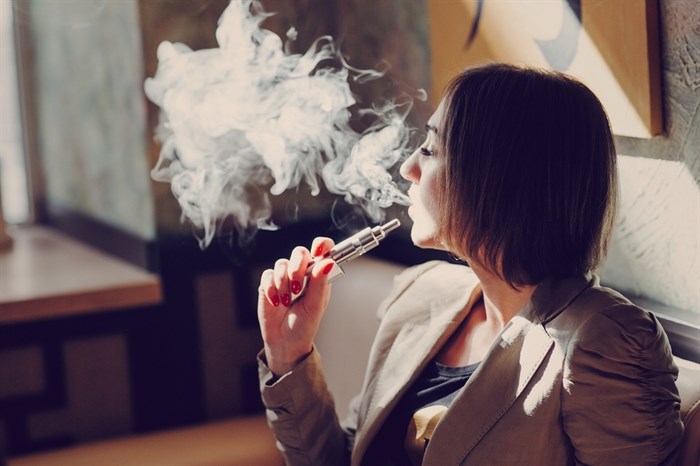
Image Credit: Shutterstock
December 18, 2020 - 6:00 AM
While tobacco smoking has been on a steady decline amongst teenagers for years, a new report shows that vaping has quickly replaced the habit.
Those findings come from the McCreary Centre Society’s B.C. Adolescent Health Survey. It has been taken by most Grade 7 to 12 students in B.C. every five years since 1992.
One part of the 2018 survey, which was released this week, compares teen cigarette smoking rates to previous surveys. It shows that 33 per cent of teens in the Interior Health region smoked tobacco in 2008. That dropped to 26 per cent in 2018.
There’s no comparable historical data for vaping but in 2018, more teens were vaping (36 per cent) than had smoked tobacco a decade before (33 per cent).
The definition the survey uses for a smoker is someone who has ever smoked tobacco.
The latest survey was taken by 38,000 students in 58 of B.C.’s 60 school districts.
The Interior Health region’s 36 per cent vaping rate is the highest of the province’s five health regions. Vancouver Coastal had the lowest vaping rate at 23 per cent.
The Interior’s tobacco smoking rate, at 26 per cent, was second highest in B.C. The Northern health region had a 28 per cent youth smoking rate. By contrast, Vancouver Coastal came in with 14 per cent cigarette smoking rate.
That may have something to do with the background of youth in different regions of the province.
“Communities with higher percentages of immigrant youth generally have lower rates of smoking,” the report states, citing an earlier study. “In B.C., Vancouver Coastal and Fraser regions had the lowest smoking rates and also the highest percentages of immigrant youth. For example, in Vancouver Coastal, 31% of students were born outside of Canada and 14% of youth had smoked, compared to the Northern region where the percentage of immigrant youth was lower (7%) and the percentage who had smoked was higher (28%).”
It doesn’t provide immigration numbers for the Interior Health region.
There is also an urban-rural divide when it comes to smoking.
“As in previous years, rural-based youth were more likely to have smoked than urban-based youth,” the report states. “Also, urban-based youth were more likely to wait until they were at least 15 years old to first smoke.”
The study looked at some of the data by subregion.
It found that 24 per cent of the teens in the more densely populated Okanagan region had smoked versus 28 per cent in the Kamloops-Cariboo-Shuswap region and 29 per cent in the Kootenays. It doesn’t break the data down into more localized areas.
“Youth were more likely to have vaped in the past month than to have ever tried smoking tobacco (27% vs. 19%),” the report states, referring to the provincial average.
Both cigarette smoking and vaping are often triggered by a troubled background.
“Some youth were more likely to have smoked and/or vaped than others, including youth with a history of physical or mental health challenges, addiction, and adverse experiences (including abuse, housing instability, government care, discrimination, bereavement, and poverty and deprivation),” the report states. “For example, 53 per cent of youth who had been sexually abused had vaped in the past month, compared to 24 per cent of those who had not experienced this type of abuse.”
Those who smoked showed more troubled behavior than those who vaped.
For example, 16 per cent of those who vaped only in the previous month had skipped classes on at least three days during that month. That compares to 25 per cent who only smoked cigarettes and 33 per cent who did both.
Only four per cent of those who had never smoked or vaped had skipped classes.
The full study can be found here.
To contact a reporter for this story, email Rob Munro or call 250-808-0143 or email the editor. You can also submit photos, videos or news tips to the newsroom and be entered to win a monthly prize draw.
We welcome your comments and opinions on our stories but play nice. We won't censor or delete comments unless they contain off-topic statements or links, unnecessary vulgarity, false facts, spam or obviously fake profiles. If you have any concerns about what you see in comments, email the editor in the link above.
News from © iNFOnews, 2020